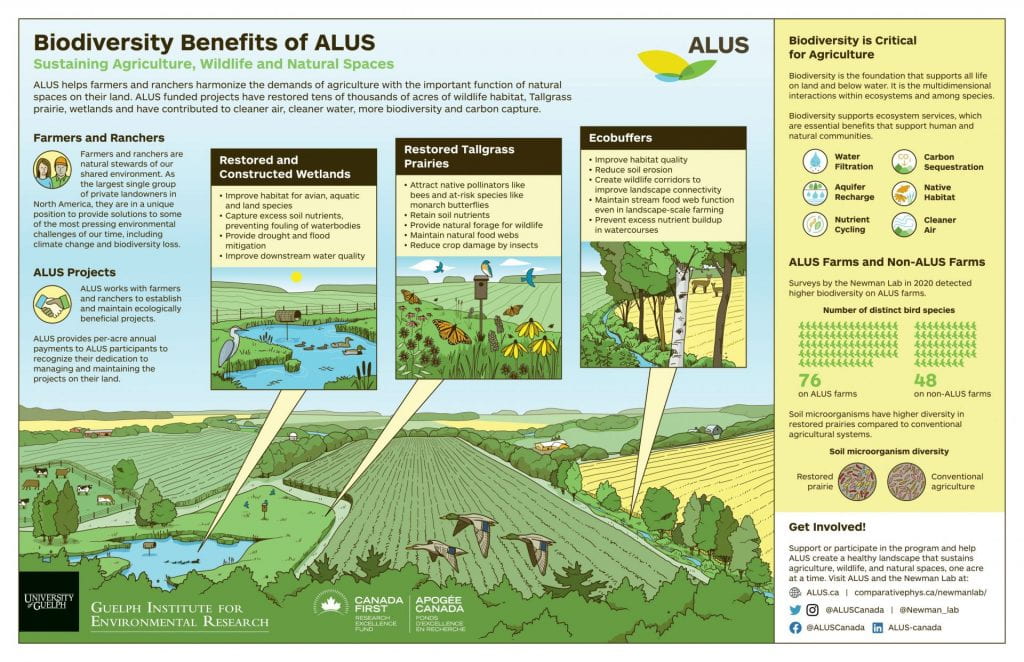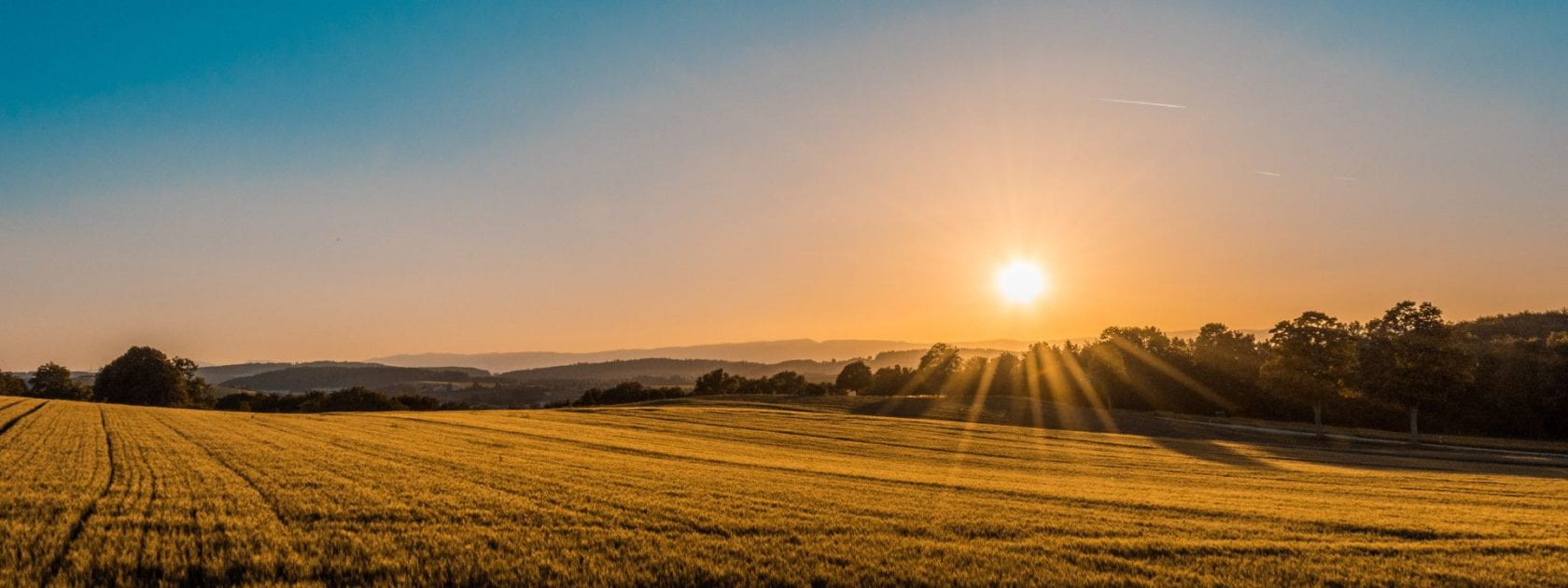By Hayley Brackenridge
Biodiversity is essential for productivity in ecosystems, including agroecosystems. Farm management techniques that promote biodiversity and natural land restoration provide beneficial services such as cleaning the air and water, capturing carbon, and increasing soil quality. Through these benefits, farmers and ranchers have an opportunity to mitigate the effects of climate change, including biodiversity loss, droughts and floods, and food and water scarcity. Increasing research and awareness of the potential for agriculture to be a climate solution can help promote adoption of these beneficial management strategies.
Brynn Varcoe, a MSc student working with Dr. Amy Newman, has been collaborating with the not-for-profit Alternative Land Use Services (ALUS) to help producers build nature-based solutions on their land to sustain agriculture and biodiversity for the benefit of communities and future generations. ALUS has been long partnering with University of Guelph researchers, including Food from Thought investigators such as Drs. Andrew MacDougall, Kari Dunfield, and Kevin McCann. Varcoe’s project specifically examines bird diversity across southern Ontario farmlands with varying levels of habitat restoration. Bird diversity is a key indicator of the success of conservation and restoration efforts, and therefore is measured to study if the restoration of farmland habitats leads to the recovery of species.



Brynn Varcoe (left) conducts bird sampling in farmlands of Southern Ontario. Some species of interest are savannah sparrows (upper right). Dr. Newman receives the 2020 Weston Family Ecosystem Innovation Award for her work on ecosystem restoration (bottom right). Photo credits: Dr. Newman and ALUS’ websites.
To communicate the benefits of ecosystem restoration, Varcoe participated in GIER’s arts-based mobilization project, forming a team with ALUS’s Communications Associate Todd Westcott and graphic designer Heather Watt-Kapitain. Varcoe brought the expertise in zoology and environmental research, while Westcott provided input from a communications and marketing perspective, and Watt-Kapitain contributed with the unique talent of distilling complex information into engaging visuals.
The triad decided to design an infographic to depict the various restoration projects being carried out by ALUS and Food from Thought researchers, including research beyond Varcoe’s master’s project. The infographic presents several, small bits of information such as the role of farmers and ranchers as stewards of the land, the benefits of restored ecosystems, and the measurable differences in diversity in ALUS and non-ALUS farms. Check out the infographic that this interdisciplinary created! You can also download it by clicking in the button below.

The benefits of this interdisciplinary partnerships for research knowledge mobilization were multiple. By communicating this information in an arts-based format, these research findings will reach a more relevant audience and have a higher impact than they would have in a scientific publication alone. The accessible language used in the infographic makes it an excellent resource for farmers and the broader community to learn about the success of ALUS restoration projects, and the potential for agriculture and nature to exist synergistically.



The team: Brynn Varcoe (left), Heather Watt-Kapitain (centre), and Todd Westcott (right).
Banner photo credit: Federico Respini on Unsplash.



